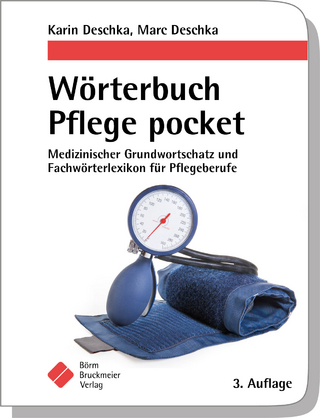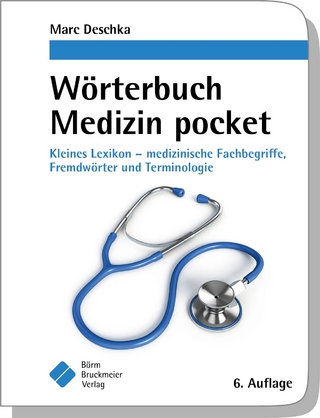
Female Sex Steroids
Springer-Verlag Berlin and Heidelberg GmbH & Co. K
978-3-540-09375-6 (ISBN)
- Titel ist leider vergriffen;
keine Neuauflage - Artikel merken
Students who have contributed to this effort include John Anderson, Joe DeLibero, Aaron Hsueh, Katrina Kelner, Debbie Metzger, Randy Richards, Jim Schaeffer, Mike Tytell, Lane von Brunt, and Cheryl Watson. Technicians without whose assistance this work could not exist include Toni Cetti, Wendy D'Attilio, Jeanie Haselby, Lily Hsueh, Helen Hyland, Jim Kovar, Kathy O'Connor, and Peggy Sansone.
I. Introduction.- 1. Historical Aspects of Steroid Hormone Action.- 2. General Consideration of the Steroid Receptor Concept.- II. Steroid Receptor Characterization and Measurement.- 1. Receptor Criteria.- a) Finite Binding Capacity.- b) High Affinity.- c) Steroid Specificity.- d) Tissue Specificity.- e) Correlation with Biologic Response.- 2. Receptor Parameters: Theory and Practice.- a) Receptor Measurement when Nonspecific Binding is Large.- b) Interpretation of Saturation Parameters by Scatchard Analysis.- 1) Estimates of Receptor Number in the Presence of Nonspecific Binding.- 2) Two Specific Sites with Different Affinities.- c) Resolving Mixed Binding Systems.- d) Receptor Determination when the Concentration of Receptor Greatly Exceeds the Dissociation Constant of the Reaction.- e) Steroid Binding Specificity.- 1) Competitive vs. Noncompetitive Interactions.- 2) Competitive Binding Analysis: Problems and Interpretations.- f) Hooks and Curves in Scatchard Plots.- 1) High Concentration of Ligand or Receptor Sites.- 2) Nonequilibrium Conditions.- 3) Instability of Ligand or Receptor Sites.- 4) Dilution of Radioactivity.- 5) Interacting Species.- 3. Receptor States and 3H-Steroid Exchange.- a) Exchange Techniques in Theory and Practice.- b) Time and Temperature of Steroid Exchange.- c) Determination of the Binding State of Receptor Sites.- 4. Methods of Receptor Assay.- a) Cytoplasmic Receptors.- 1) Charcoal Adsorption Procedure.- 2) Hydroxylapatite Procedure.- 3) Protamine Sulfate Precipitation Method.- 4) DEAE Filter Method.- b) Nuclear Receptors.- 1) 3H-Estradiol Exchange of Nuclear Receptor-Estrogen Complexes.- 2) Modifications of 3H-Steroid Exchange Assay.- 3) Nuclear Binding and Retention of Receptor-Hormone Complexes.- III. Cellular Compartments and Translocation of Receptor-Steroid Complexes.- 1. Cytoplasmic or Nuclear Localization of Receptors.- 2. Evidence for Nuclear Preference.- 3. Are Cytoplasmic Receptors Necessary?.- 4. Mechanisms for Steroid Accumulation not Involving Receptors.- IV. Characteristics of Cytoplasmic and Nuclear Receptor Forms.- 1. Cytoplasmic Forms of Estrogen and Progesterone Receptors.- a) Sucrose Density Gradient Analysis.- b) Chromatographic and Electrophoretic Analysis.- c) Type II Binding Sites in Uterine Cytosol.- 2. Nuclear Binding of Estrogen and Progesterone Receptors.- a) Receptor Forms and Nuclear Binding.- b) Two Types of Estrogen Binding Sites in Uterine Nuclei.- 3. Nuclear Acceptor Sites and Nuclear Binding.- V. Nuclear Binding and Biologic Response.- 1. Nuclear Occupancy and Response.- a) Nuclear Retention of the Estrogen Receptor.- b) Early Uterotropic Responses and the Retention of Nuclear Estrogen Receptor.- c) Late Uterotropic Responses and the Retention of RnE Complexes.- 2. Nuclear Acceptors and Long-Term Nuclear Retention.- 3. Uterotropic Response and Nuclear Retention of the Estrogen Receptor.- 4. Nuclear Receptor Binding and the Control of Transcriptional Events in the Uterus.- a) RNA Polymerase Activity.- b) RNA Polymerase Initiation Sites in the Uterus.- 5. Interrelationships Between Early and Late Uterotropic Responses.- 6. Nuclear Binding and RNA Transcription in the Chick Oviduct.- 7. Nuclear Binding and the Control of RNA and Protein Synthesis in the Chicken Liver.- a) Binding of Estrogen by Chick Liver Nuclei.- b) Relationship Between Nuclear Binding, RNA Polymerase Activity, and Polymerase Initiation Sites.- c) Relationship Between Nuclear Estrogen Receptor and the Synthesis of VLDL and Plasma Triglycerides.- VI. Control of Steroid Receptor Levels and Steroid Antagonism.- 1. Control of Estrogen Receptor Concentrations.- 2. The Relationship of Cytoplasmic Replenishment of the Estrogen Receptor to Biologic Response.- 3. Control of the Progesterone Receptor by Estrogen.- 4. Effects of Progesterone on the Control of Progesterone Receptor.- 5. Control of Estrogen Receptor Levels by Progesterone and Its Relationship to Estrogen Antagonism.- a) Receptor Replenishment.- b) Nuclear Accumulation and Retention of the Receptor-Estrogen Complex.- c) Antagonism of Estrogen Receptor by Progesterone in the Adult Rat Uterus.- 6. Estradiol Antagonism by Estriol and Other Short-Acting Estrogens.- a) Effects of Estriol on Replenishment of the Cytoplasmic Estrogen Receptor.- b) Estriol Effects on RnE2 Retention and Uterine Growth.- 7. Triphenylethylene Derivatives and Estrogen Antagonism.- a) Effects of Triphenylethylene Derivatives on Uterine Growth.- b) Effects of Anti-Estrogens on Cytoplasmic Replenishment and Nuclear Retention of Estrogen Receptors.- c) Triphenylethylene Derivatives and Differential Cell Stimulation.- 8. General Considerations of Steroid Antagonism and Hormone Potency.- a) Classification of Estrogen Agonists and Antagonists.- b) Biologic Implications of Short- and Long-Acting Estrogen Agonists and Antagonists.- c) Dose Response Curves, Estrogen Potency, and Receptor Occupancy.- VII. Steroid Hormones and Neoplasia.- 1. Estrogens and Cancer.- 2. Triphenylethylene Derivatives, Hyperestrogenization, and Reproductive-Tract Cancer.- 3. Hyperestrogenization and Nuclear Body Formation.- 4. Steroid Receptors and Neoplasia.- a) Estrogen-Dependent Growth.- b) Interactions of Estrogen and Progesterone Receptors.- c) Estrogen-Independent Growth.- VIII. Physiologic Relationships and Steroid Receptor Binding.- 1. Blood Binding and Metabolism of Steroids.- 2. Steroid Receptors During Development.- a) Estrogen Receptors and Uterine Development.- b) Estrogen Receptors During Avian Oviduct Development.- 3. Steroid Receptor Binding During the Reproductive Cycle.- a) Receptor Binding in the Ovary.- b) Steroid Receptors in the Uterus and Pituitary.- 1) Estrogen Receptor.- 2) Progesterone Receptor.- c) Steroid Receptor Binding During Pregnancy and Lactation.- 1) Uterus.- 2) Ovary.- 3) Mammary Gland.- 4) Placenta and Fetus.- IX. Gonadal Steroids and Brain Function.- 1. Distribution of Targets Within the Central Nervous System.- a) In Vivo Uptake and Retention of 3H-Steroid.- b) Autoradiographic Localization of Estrogen and Progesterone Receptive Sites.- 2. Cytoplasmic Receptors for Estrogens and Progestins in the Central Nervous System.- 3. Translocation of Estrogen Receptors to Nuclear Compartments.- 4. Age- and Sex-Related Differences in Receptor Content or Function.- 5. Gonadal Steroids and Nervous System Function.- a) Estrogens and Hypothalamic RNA Polymerases.- b) Hypothalamic Control of Gonadotropin Secretion.- X. Speculations and Conclusions.- 1. Interplay of Low-and High-Affinity Steroid Receptive Sites.- 2. Spare Receptors and Hormone-Induced Responses.- 3. Nuclear Acceptors and Salt-Insoluble Receptors.- 4. Nuclear Processing of the Receptor-Estrogen Complex.- 5. Homeostatic vs. Growth-Regulating Steroid Hormones.- 6. Conclusions.- a) Hormone Delivery to Target Cells.- b) Hormone Binding to Receptors in the Cytoplasm.- c) Nuclear Binding of Receptor-Hormone Complexes and Hormone-Stimulated Events.- d) Antagonism of Hormone Action.- e) Neoplasia and Estrogens.- 7. Epilogue.- References.
| Reihe/Serie | Monographs on Endocrinology ; 14 |
|---|---|
| Verlagsort | Berlin |
| Sprache | englisch |
| Gewicht | 670 g |
| Themenwelt | Medizin / Pharmazie ► Allgemeines / Lexika |
| ISBN-10 | 3-540-09375-3 / 3540093753 |
| ISBN-13 | 978-3-540-09375-6 / 9783540093756 |
| Zustand | Neuware |
| Haben Sie eine Frage zum Produkt? |
aus dem Bereich


